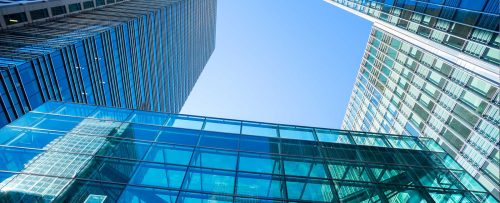
Case Studies Show How to Significantly Reduce Carbon Emissions in the Construction of New Buildings at Little to No Cost
RMI and Skanska USA Building release a report laying out a framework for reducing embodied carbon in buildings for little to no cost.
Boulder, CO – August 23, 2021
RMI’s new report Reducing Embodied Carbon in Buildings lays out the framework for reducing the carbon emissions associated with building materials by nearly half in a cost-effective way. Using case studies conducted by Skanska, the report focuses on some of the most prevalent building construction types in the United States today.
Buildings account for at least 39 percent of energy-related global carbon emissions, and a quarter of these emissions result from embodied carbon — the emissions associated with building materials and construction. While solutions for reducing these emissions exist, they have not been widely studied, leading to significant knowledge gaps among construction industry professionals, policymakers and building owners.
In a separate report, RMI lays out specific opportunities for reducing the embodied carbon of concrete, a nearly ubiquitous material with a sizable climate impact. The Concrete Solutions Guide expands on the need to optimize concrete mixes to reduce overall embodied carbon in buildings, which can achieve up to a 33 percent reduction in the concrete, at little to no additional cost.
“The upfront carbon that is produced when we make materials has immediate impact on our climate. With the release of Reducing Embodied Carbon in Buildings and Concrete Solutions Guide, we demonstrate how engineers, architects and policymakers can easily reduce this upfront carbon impact at low to no additional capital cost. This embodied carbon information is especially critical to apply now, in this decisive decade of climate concern,” said Victor Olgyay, AIA, principal with the RMI Carbon-Free Buildings Program.
By implementing these practices, building owners will also be better prepared for future code or policy changes that incentivize or require low embodied carbon. Such changes can come in the form of a carbon tax, procurement policies, building code requirements or other regulatory mechanisms. These benefits are in addition to helping improve air quality and public health in communities located close to industrial centers.
“How we make things has a significant impact on climate change. The production of steel and cement alone account for approximately 5 and 7 percent of global emissions, respectively. That’s why Breakthrough Energy is a proud partner of RMI, whose Reducing Embodied Carbon in Buildings and Concrete Solutions Guide provide critical, cost-effective solutions to lower the carbon impact of steel, cement and other building materials,” said Mike Boots, Executive Vice President at Breakthrough Energy.
“Not only is the current price premium manageable today, it will continue to drop as the decarbonization of the supply chain accelerates,” said Steve Clem, senior vice president, Skanska USA Building in Portland.
“Leveraging Skanska’s expertise and robust set of real project data, we were able to show that lowering embodied carbon is absolutely possible with minimal cost impacts. The industry has the knowledge, technology and data with the use of the EC3 tool to drive lower-embodied-carbon solutions, we just need to go out and act on it,” noted Skanska’s Mark Chen, senior sustainability engineer in Seattle.
Media Inquiries Please Contact:
RMI: Alex Chin, T: +1 973-262-0002, E: achin@rmi.org
Skanska: Dianne Danowski Smith,T: +1 503.201.7019, E: dianne@publixnw.com
About RMI
Rocky Mountain Institute (RMI) is an independent, nonpartisan nonprofit founded in 1982 that transforms global energy systems through market-driven solutions to secure a prosperous, resilient, clean energy future for all. In collaboration with businesses, policymakers, funders, communities, and other partners, RMI drives investment to scale clean energy solutions, reduce energy waste, and boost access to affordable clean energy in ways that enhance security, strengthen the economy, and improve people’s livelihoods. RMI is active in over 60 countries.
More information on RMI can be found at www.rmi.org or follow us on Twitter @RockyMtnInst.
About Skanska
Skanska is a leading global construction and development company. Its local operations comprise the Oregon and Southwest Washington regions, earning revenues of $877.6 million in 2020 and employing more than 350 workers. The 2020 combined Oregon and Washington gross revenues totaled $1.51 billion.
Skanska is one of the world’s leading construction and development companies. Skanska’s core operations in the U.S. include building construction, civil infrastructure and developing self-financed commercial properties. An industry-leading innovator in both safety and project execution, Skanska offers competitive solutions for traditional and complex assignments that build a more sustainable future for our customers and communities. In 2020, Construction operations in the U.S. generated $6.5 billion in revenue. Skanska’s U.S. commercial development operations has invested a total of $2.8 billion in commercial and multi-family projects, creating more than 10 million-square feet of sustainable and community focused developments in select U.S. markets. With U.S. headquarters in New York City, Skanska has 29 offices with 7,600 employees nationwide. Global revenue of parent company Skanska AB, headquartered in Stockholm and listed on the Stockholm Stock Exchange, totaled approximately $17.2 billion in 2020.